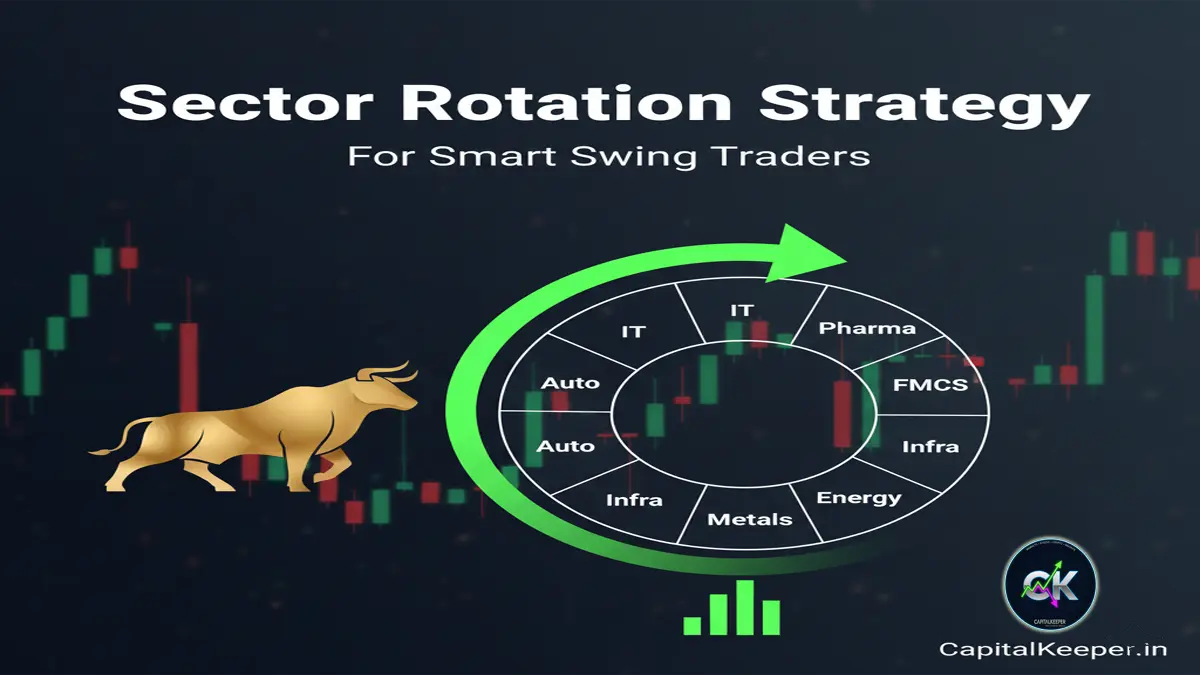What is a Day Trader & Their Approach? | Strategies, Skills & Risks Explained
By CapitalKeeper | Beginner’s Guide | Indian Equities | Market Moves That Matter
What is a Day Trader & Their Approach?
Discover who day traders are, how they operate, and the strategies they use. Learn the approach, benefits, and risks of day trading in financial markets.
Introduction
Day trading has become one of the most talked-about strategies in modern financial markets. With the rise of online trading platforms, real-time data, and affordable brokerage services, more individuals are trying their hands at short-term speculation. But what exactly is a day trader, and what approach do they follow?
In this blog, we’ll break down the concept of day trading, explain how day traders operate, discuss popular approaches, and highlight the benefits and risks involved. By the end, you’ll understand whether day trading aligns with your financial goals and risk appetite.
Who is a Day Trader?
A day trader is someone who buys and sells financial instruments—such as stocks, currencies, commodities, or derivatives—within the same trading day. Unlike long-term investors, day traders do not hold positions overnight. Their goal is to capitalize on small price movements that occur throughout the day.
Key traits of a day trader:
- Executes multiple trades within a single session.
- Relies heavily on technical analysis, price action, and indicators.
- Focuses on liquidity and volatility to find opportunities.
- Avoids long-term exposure to overnight risks like earnings reports, macroeconomic news, or geopolitical events.
The Core Approach of Day Trading
Day trading is not about gambling—it’s a structured strategy that combines discipline, analysis, and execution. Here’s how the typical approach looks:
1. Market Selection
Day traders usually stick to highly liquid markets such as:
- Equities: Nifty 50, S&P 500, large-cap stocks.
- Forex: Major currency pairs like EUR/USD or USD/JPY.
- Commodities: Gold, crude oil, silver.
- Derivatives: Futures and options on indices or stocks.
Liquidity ensures they can enter and exit positions quickly without large slippage.
2. Technical Analysis
Most day traders use charts, candlestick patterns, and indicators rather than fundamentals. Popular tools include:
- Moving Averages (MA): To identify short-term trends.
- Relative Strength Index (RSI): For overbought/oversold signals.
- MACD (Moving Average Convergence Divergence): For momentum and trend confirmation.
- Volume Analysis: To validate breakouts or breakdowns.
3. Strategies Used by Day Traders
Some common approaches are:
- Scalping: Making dozens of trades daily, targeting very small profits per trade.
- Momentum Trading: Entering trades when strong directional moves occur.
- Breakout Trading: Capitalizing on price breaking above resistance or below support.
- Reversal Trading: Spotting points where price is likely to turn back.
4. Risk Management
Day traders are extremely risk-conscious since markets can reverse quickly. Their tactics include:
- Placing stop-loss orders to cap potential losses.
- Using position sizing rules (risking only 1–2% of capital per trade).
- Avoiding over-leverage to prevent margin calls.
5. Discipline & Psychology
The hardest part of day trading isn’t technical—it’s emotional control. Successful day traders:
- Stick to a trading plan without chasing the market.
- Avoid revenge trading after a loss.
- Accept small, controlled losses as part of the process.
Benefits of Day Trading
- Quick Results: Profits (or losses) are realized daily.
- No Overnight Risk: Traders exit before the market closes.
- High Liquidity: Focus on liquid instruments allows smooth execution.
- Multiple Opportunities: Intraday volatility creates frequent setups.
Risks of Day Trading
- High Stress: Constant monitoring of screens and rapid decision-making.
- High Costs: Brokerage fees and transaction costs can eat into profits.
- Emotional Pressure: Fear and greed often lead to mistakes.
- Steep Learning Curve: Requires deep market knowledge and fast reflexes.
Example of a Day Trader’s Workflow
- Pre-Market Analysis – Scanning news, global markets, and pre-opening trends.
- Watchlist Creation – Selecting 5–10 stocks or assets with volatility potential.
- Chart Setup – Preparing indicators and levels of support/resistance.
- Execution – Entering trades based on signals, using stop-loss and targets.
- End of Day Review – Assessing performance, noting mistakes, and refining strategy.
Is Day Trading Right for You?
Day trading appeals to those who:
- Can dedicate full-time hours to the market.
- Enjoy fast-paced decision-making.
- Possess the discipline to follow a plan.
- Have sufficient capital to absorb potential losses.
For others, swing trading or positional trading might be more suitable since they require less screen time and involve lower stress.
Conclusion
Day trading is an exciting but challenging approach to the financial markets. A day trader thrives on volatility, uses technical analysis, and applies strict risk management to make quick profits from intraday price moves. However, the strategy is not for everyone—it demands discipline, emotional resilience, and a willingness to learn from mistakes.
If you’re considering becoming a day trader, start small, practice with demo accounts, and focus on risk management above everything else. Remember, survival in trading comes before profitability.
✅ Final Takeaway: A day trader is not just someone who trades daily but someone who masters the art of discipline, timing, and risk management in fast-moving markets.
📌 For daily trade setups, technical learning, and smart investing tips, stay tuned to CapitalKeeper.in
📌 For more real-time updates, trade setups, and investment insights — follow us on [Telegram] and [WhatsApp Channel] subscribe to our newsletter!

Subscribe Now , Join Telegram the Crypto Capital Club, Get Free Crypto Updates
📌 Disclaimer
The content provided on CapitalKeeper.in is for informational and educational purposes only and does not constitute investment, trading, or financial advice. While we strive to present accurate and up-to-date market data and analysis, we make no warranties or representations regarding the completeness, reliability, or accuracy of the information.
Stock market investments are subject to market risks, and readers/investors are advised to conduct their own due diligence or consult a SEBI-registered financial advisor before making any investment decisions. CapitalKeeper and its authors are not liable for any loss or damage, direct or indirect, arising from the use of this information.
All views and opinions expressed are personal and do not reflect the official policy or position of any agency or organization. Past performance is not indicative of future results.By using this website, you agree to the terms of this disclaimer.
Ranjit Sahoo
Founder & Chief Editor – CapitalKeeper.in
Ranjit Sahoo is the visionary behind CapitalKeeper.in, a leading platform for real-time market insights, technical analysis, and investment strategies. With a strong focus on Nifty, Bank Nifty, sector trends, and commodities, she delivers in-depth research that helps traders and investors make informed decisions.
Passionate about financial literacy, Ranjit blends technical precision with market storytelling, ensuring even complex concepts are accessible to readers of all levels. Her work covers pre-market analysis, intraday strategies, thematic investing, and long-term portfolio trends.
When he’s not decoding charts, Ranjit enjoys exploring coastal getaways and keeping an eye on emerging business themes.
📌 Follow Ranjit on:
LinkedIn | Twitter/X | Instagram | ✉️ contact@capitalkeeper.in
















Leave a Reply